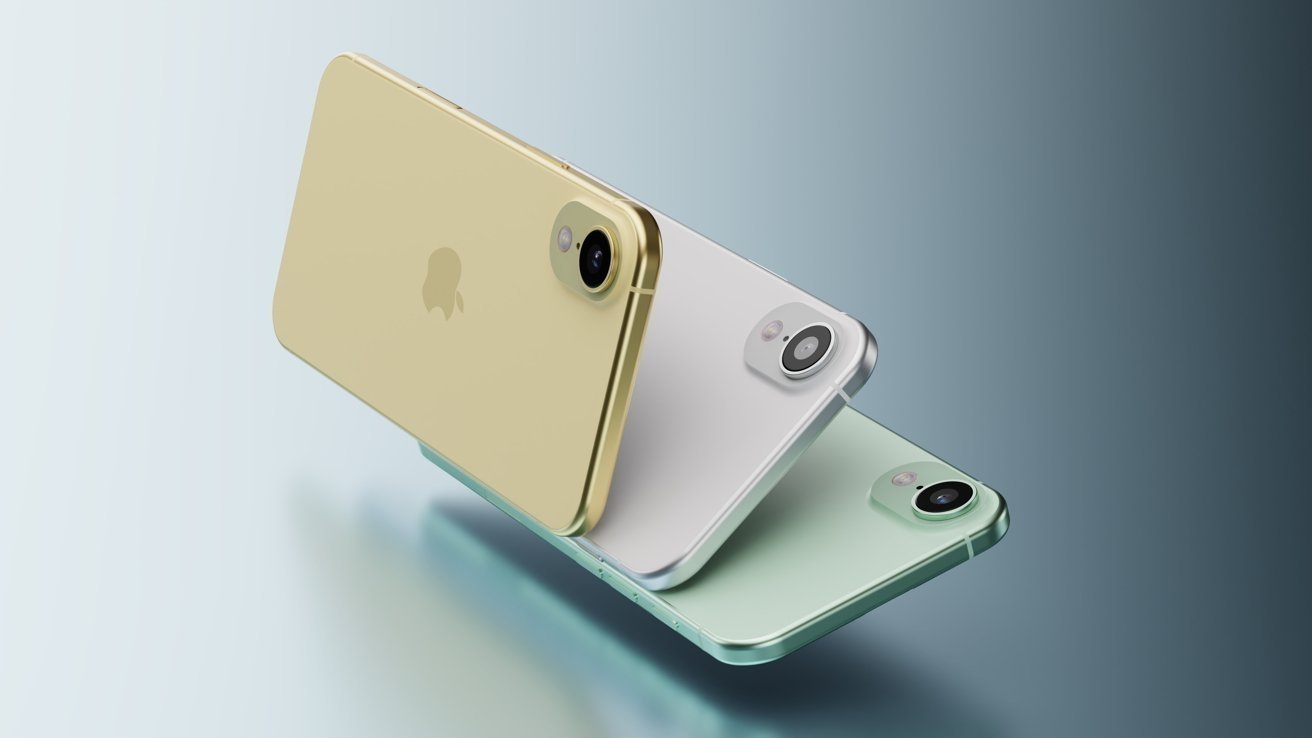iPhone 17 could be even thinner than expected
Analyst Ming-Chi Kuo claims that previous reports of an iPhone 17 Slim being 6mm are underestimating its thinness, at least for part of the device.

A render of what the iPhone 17 Slim could look like
While rumors of a slim iPhone 17 have been circulating since at least June 2024, there was initially little news of just how much slimmer it could be than the 7.3mm of the iPhone SE. Then in November 2024, reports claimed that it would come in at a significantly thinner 6mm.
Now according to Ming-Chi Kuo, the actual figure is going to be just 5.5mm -- but perhaps only for part of the iPhone.
"The 2H25 ultra-thin iPhone [will have] the thinnest part around 5.5mm]," writes Kuo in his blog. He adds no further detail so it's not possible to be sure what he means by this figure being just a one part.
Conceivably, he's just describing the chassis and means that the camera bump will make it wider. Alternatively, it could be that Apple plans to accentuate the thinness by having a wedge shape, as in older versions of the MacBook Air.
Given that the thin design is reportedly already creating difficulties with the iPhone 17 Slim's battery capacity, it seems unlikely that Apple could have the option to add a wedge, however.
Kuo also backs up recent reports that the iPhone 17 slim will be too thin to have a SIM card tray. That won't be a concern in the US, but most other countries still require physical SIM cards -- and Kuo expects this will cause problems for sales in China.
Despite that, Kuo expects that it's possible the iPhone 17 Slim will outsell the iPhone 16 Plus that it's believed to be replacing. However, he doesn't see it being a significant boost to overall iPhone sales because he believes it will be priced higher than the iPhone 16 Plus.
He also expects that the design will mean that certain components will be downgrades from other iPhone designs. While rumors vary widely, it's been speculated that the slim iPhone will have to reduce its number of cameras.
Ming-Chi Kuo has previously been one of the best sources for accurate Apple leaks, but his track record has taken a turn for the worse in the last few years. Currently he tends to report both information from his supply chain sources, and speculation that is solely based on his experience.
In this case, as so often now, he doesn't say which applies overall to this latest report. However, at least part of it comes from discussions with what he describes as key suppliers.
Rumor Score: Possible
Read on AppleInsider

Comments
Can't be sold in most countries, unlike the 16 Plus.
But it should still outsell the 16 Plus.
Yeah, right. And keep in mind that, even if it is 5.5mm, this phone's "big" selling point will be that it's 55/1000ths of an inch thinner than the iPhone 6 that debuted 11 years ago. Geez, will wonders never cease? Steve pulled a laptop out of a manila envelope. Tim will be showing the live feed of a micrometer measurement of an iPhone. I suspect the invitation to this year's big iPhone event in Sept. will feature a single word: YAWN.
However, if you pick up my wife's 14 Pro Max with a case and then pick up my Honor 50 with a case, the difference is startling. It really takes you aback. It is very noticeable.
If they can squeeze a decently specced iPhone into something thinner and lighter than my Honor 50, it might appeal to a lot of people. The unknown would be price of course.
As for 'thinness' in absolute terms you only have to look at the latest Honor/Huawei folding phones to see what is shipping today.
HONOR is already on its third gen Silicon Carbon batteries so being thin and having acceptable battery life (and much faster charging) shouldn't be an issue, and Apple is long overdue for battery/charging y improvements anyway.
So, from a relative perspective when compared to most iPhones on the market, there might actually be some demand. Especially as it would be just one model and those who prefer the absolute most battery life would still be able to choose a regular iPhone.
Wonder how long high end ASP phones can hold up. In the USA, as long as carriers have payment plans or subsidies, perhaps for a long while yet. Similar to other countries with similar payment structures. If a customer has to buy the cost of phone upfront, the number of high end phones sold will be shrinking.
If cloud based LLM services take off, it's going to be interesting to see what happens.